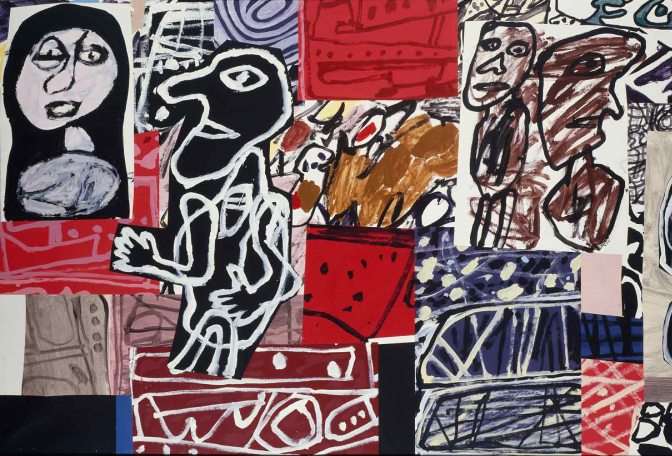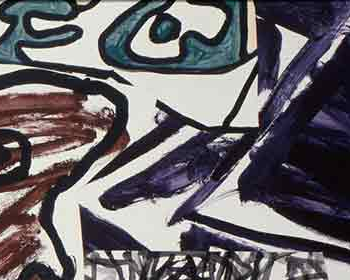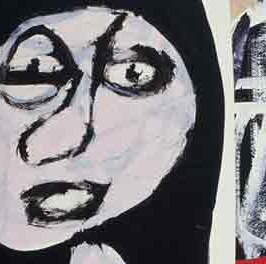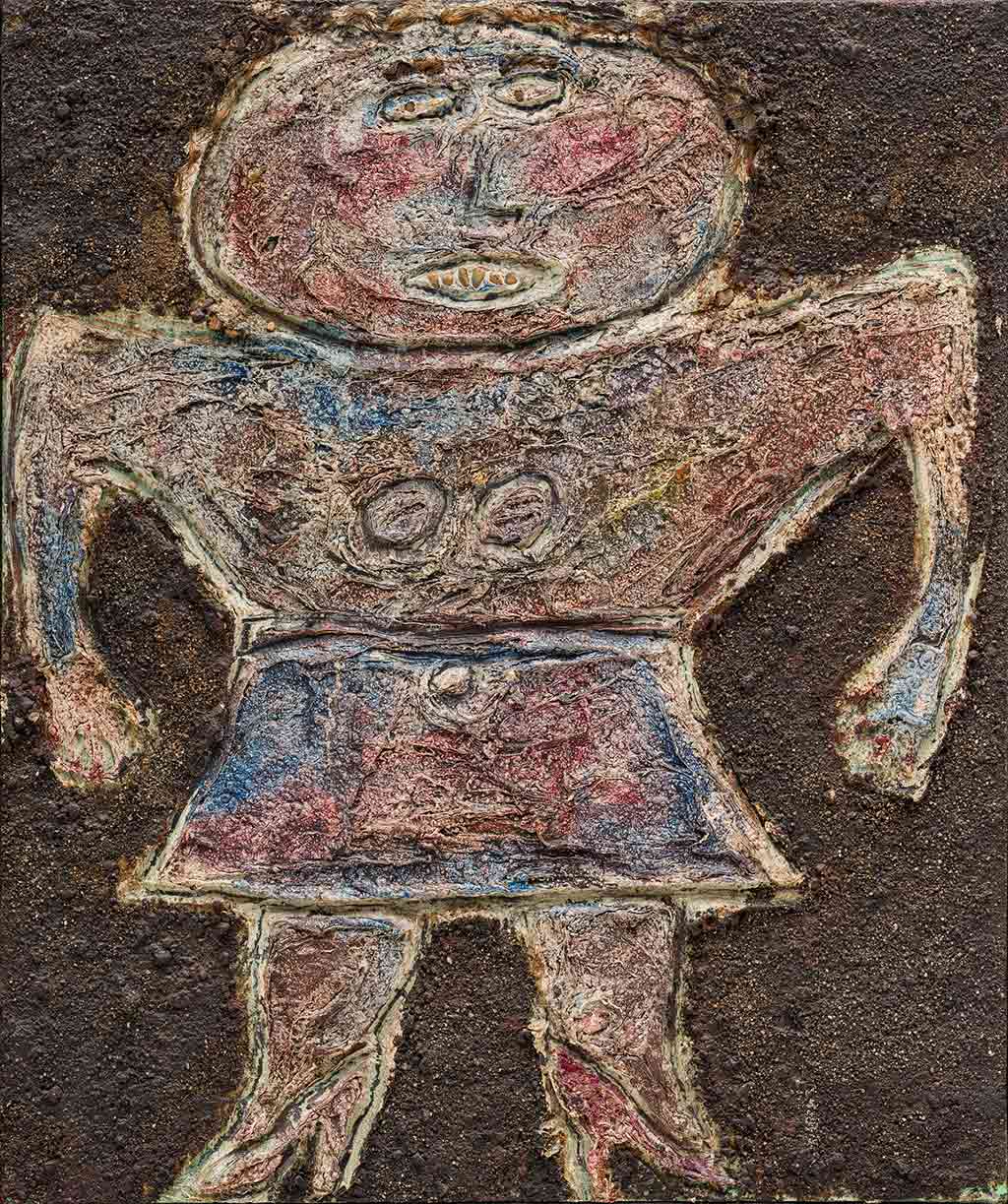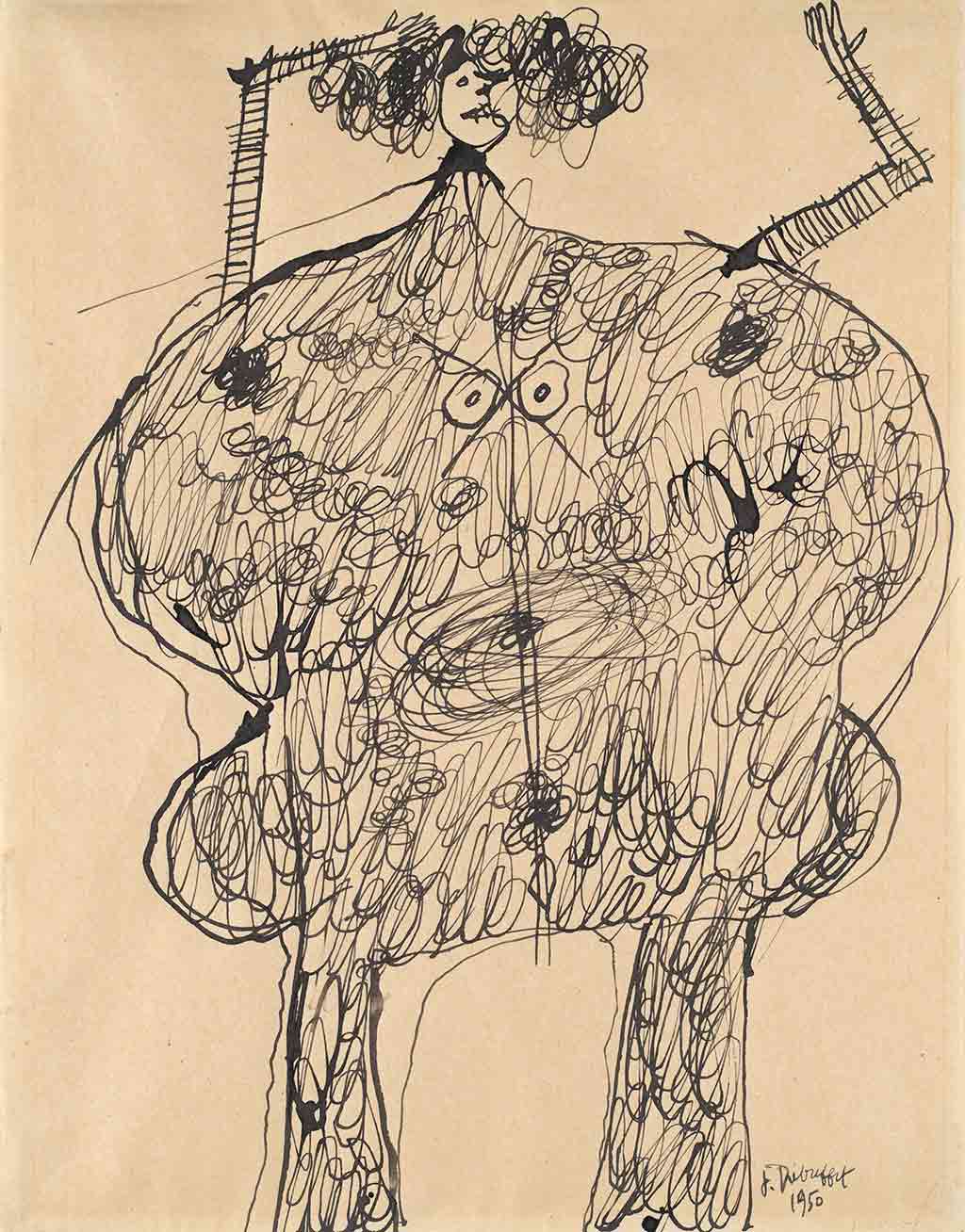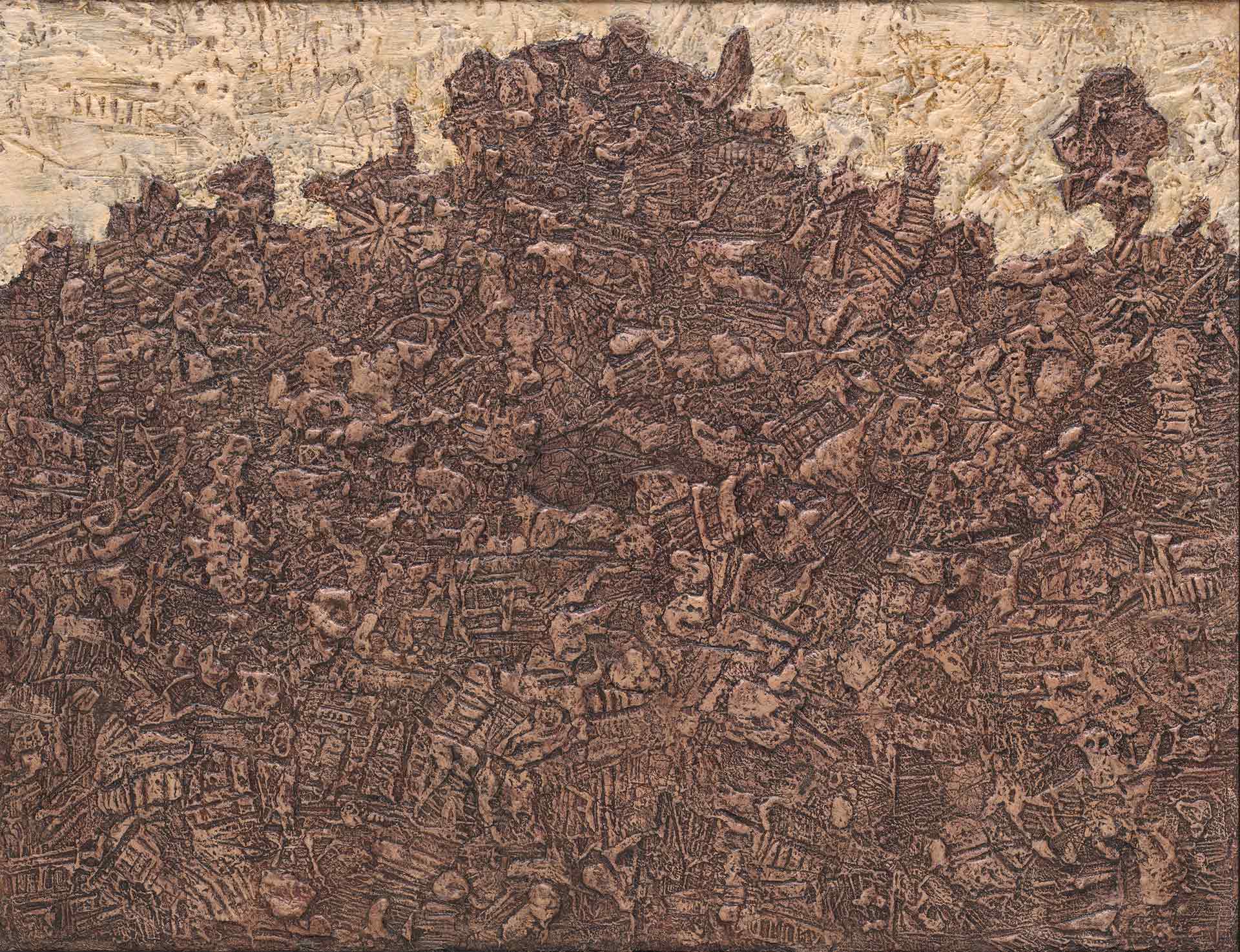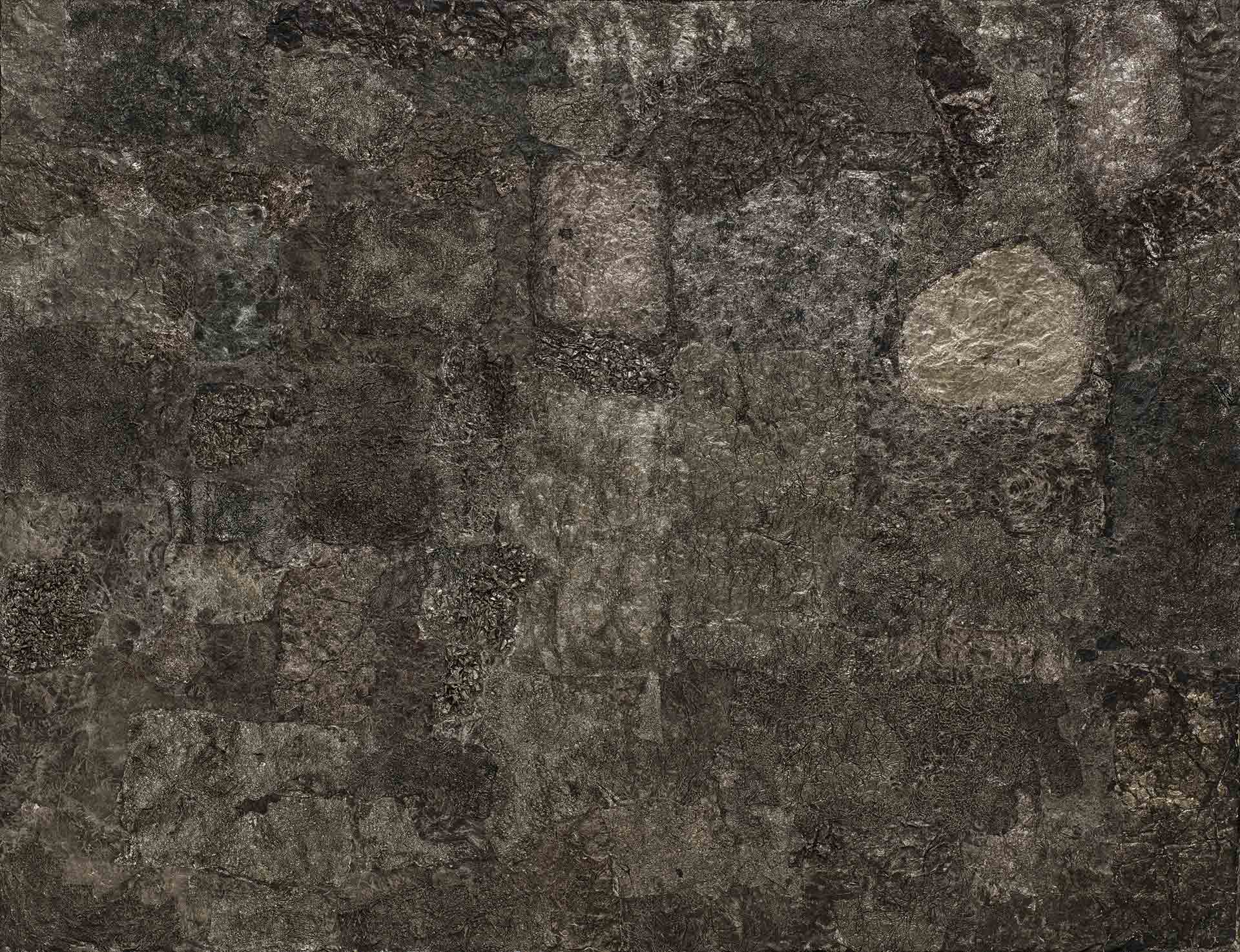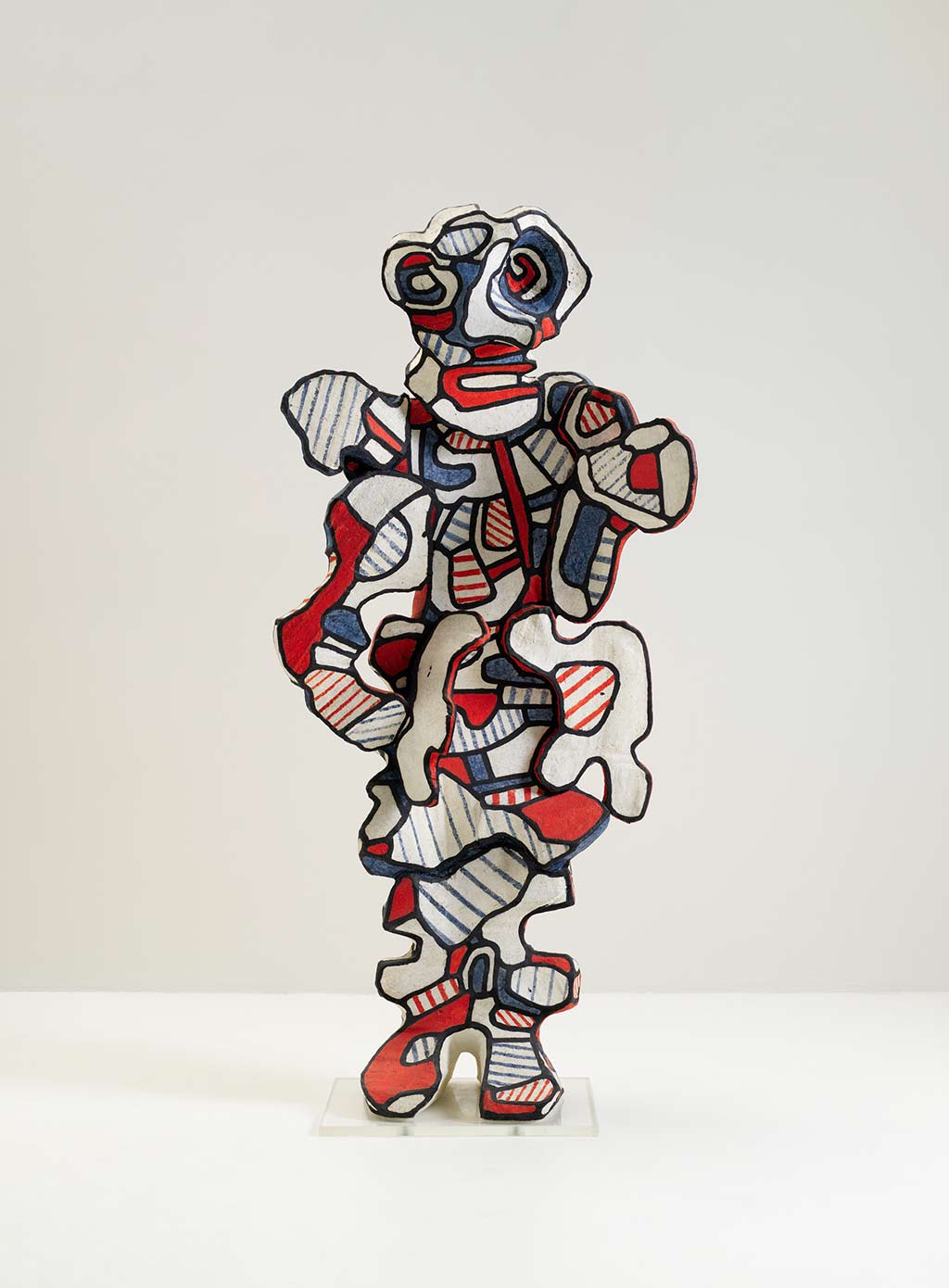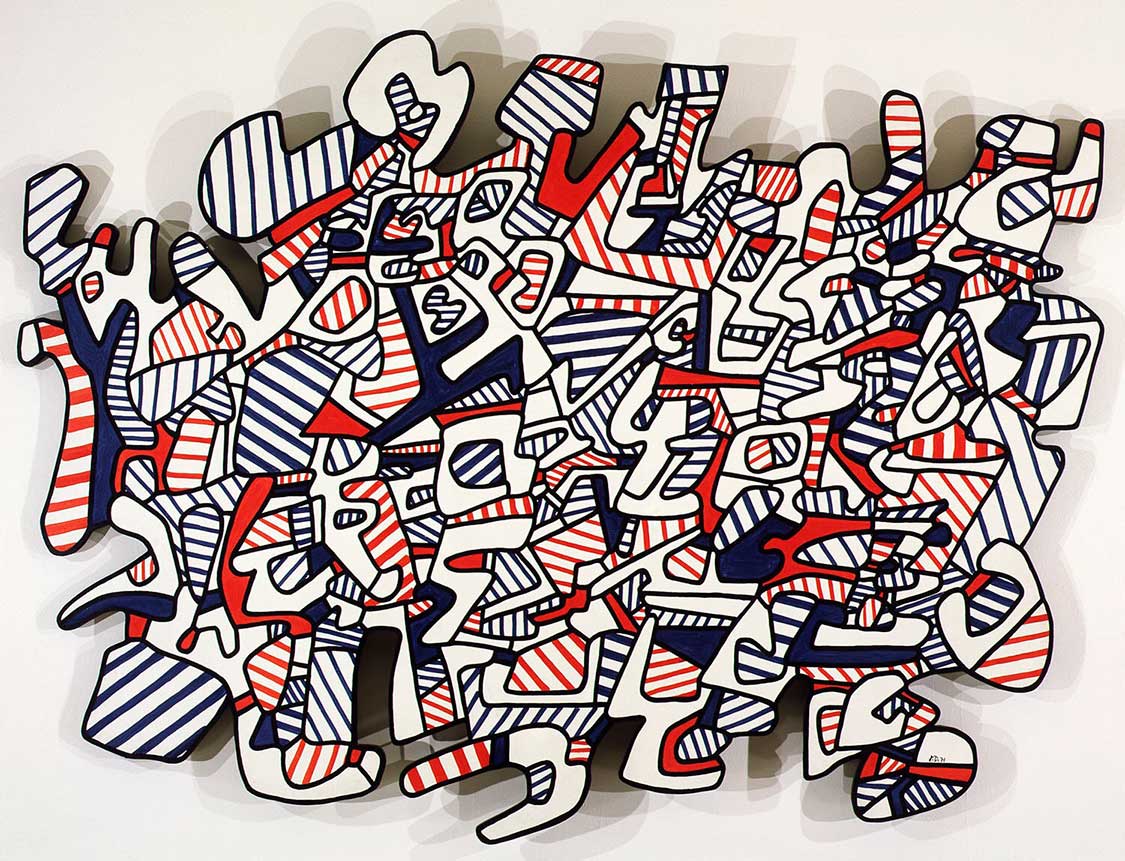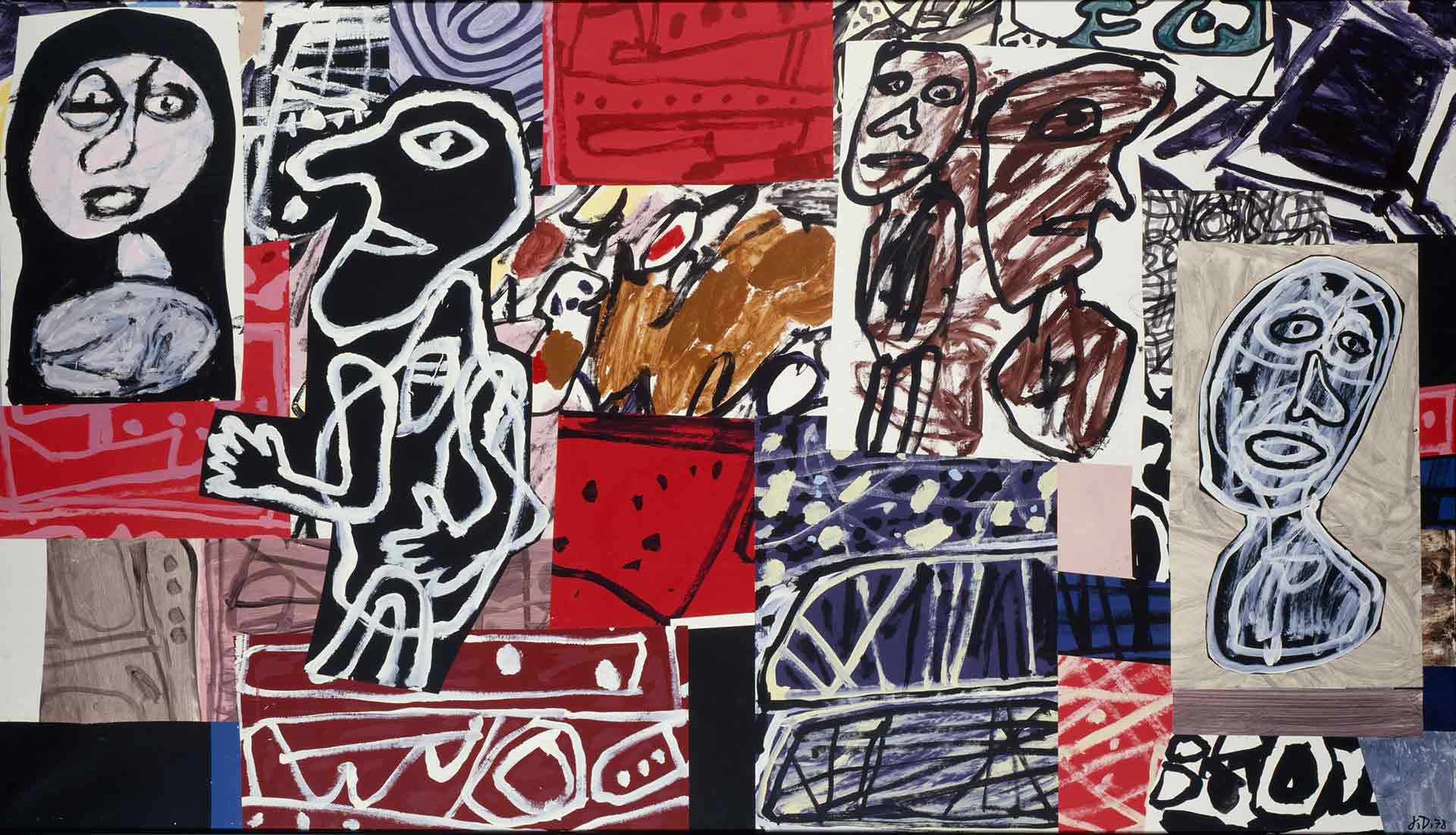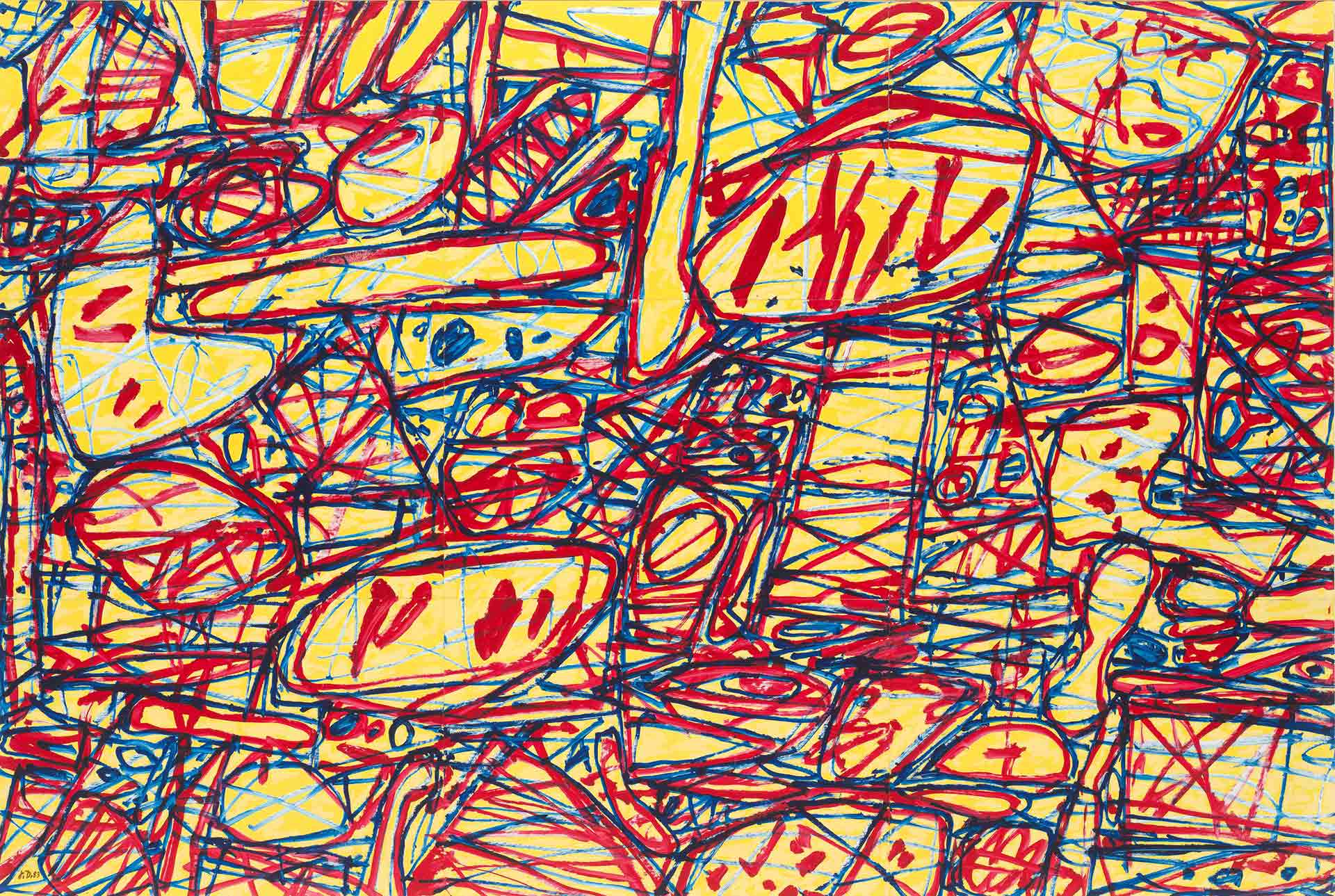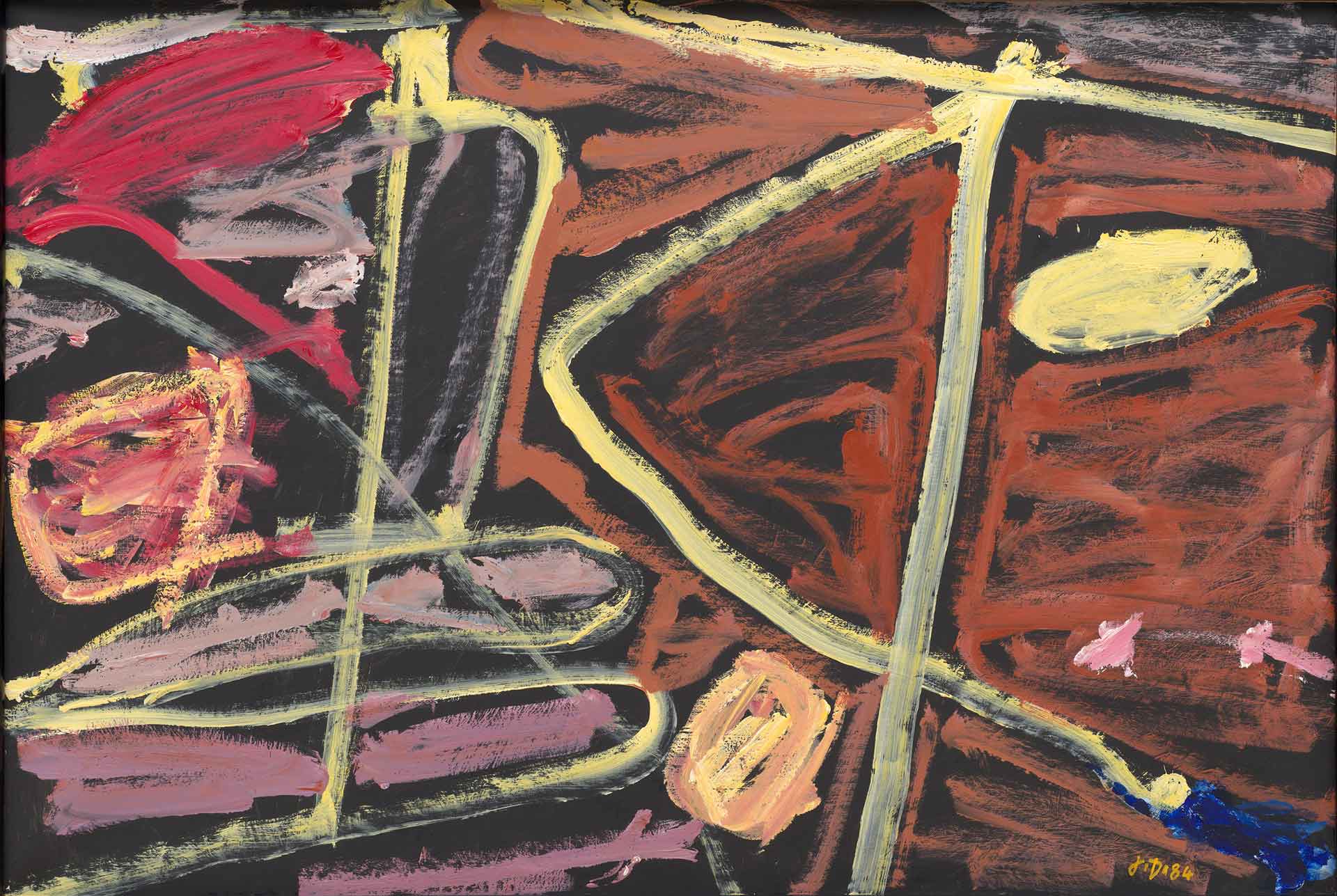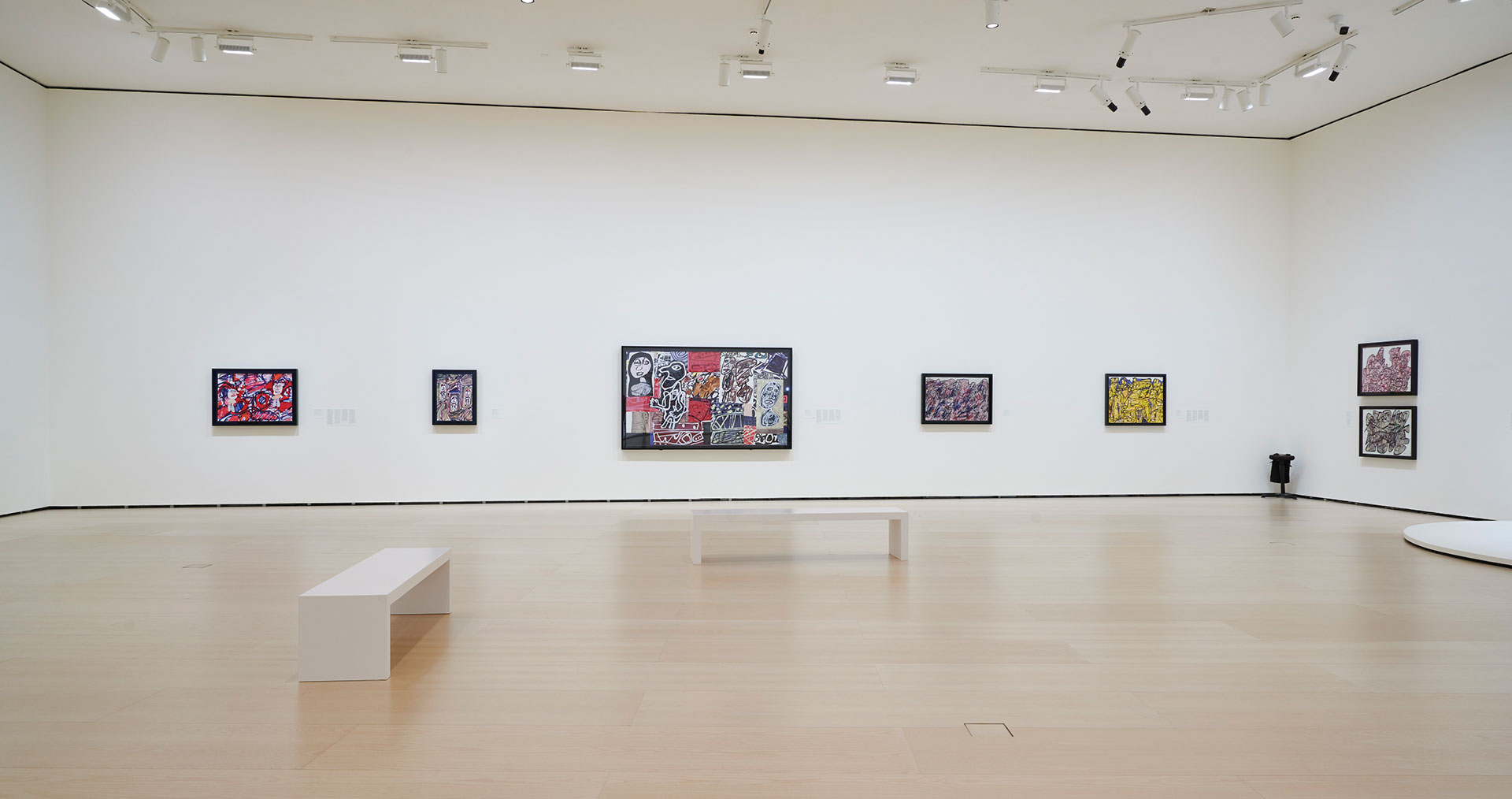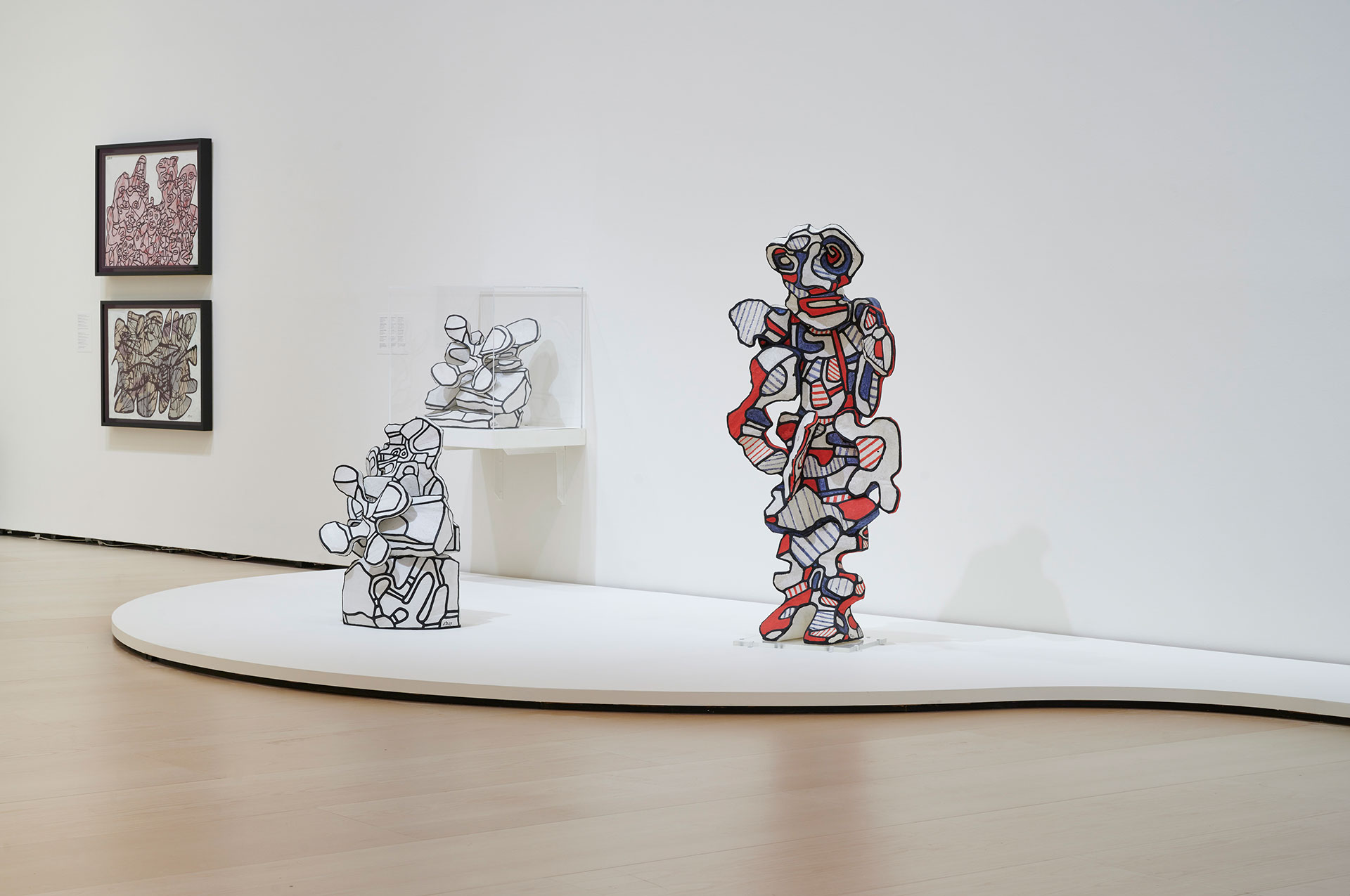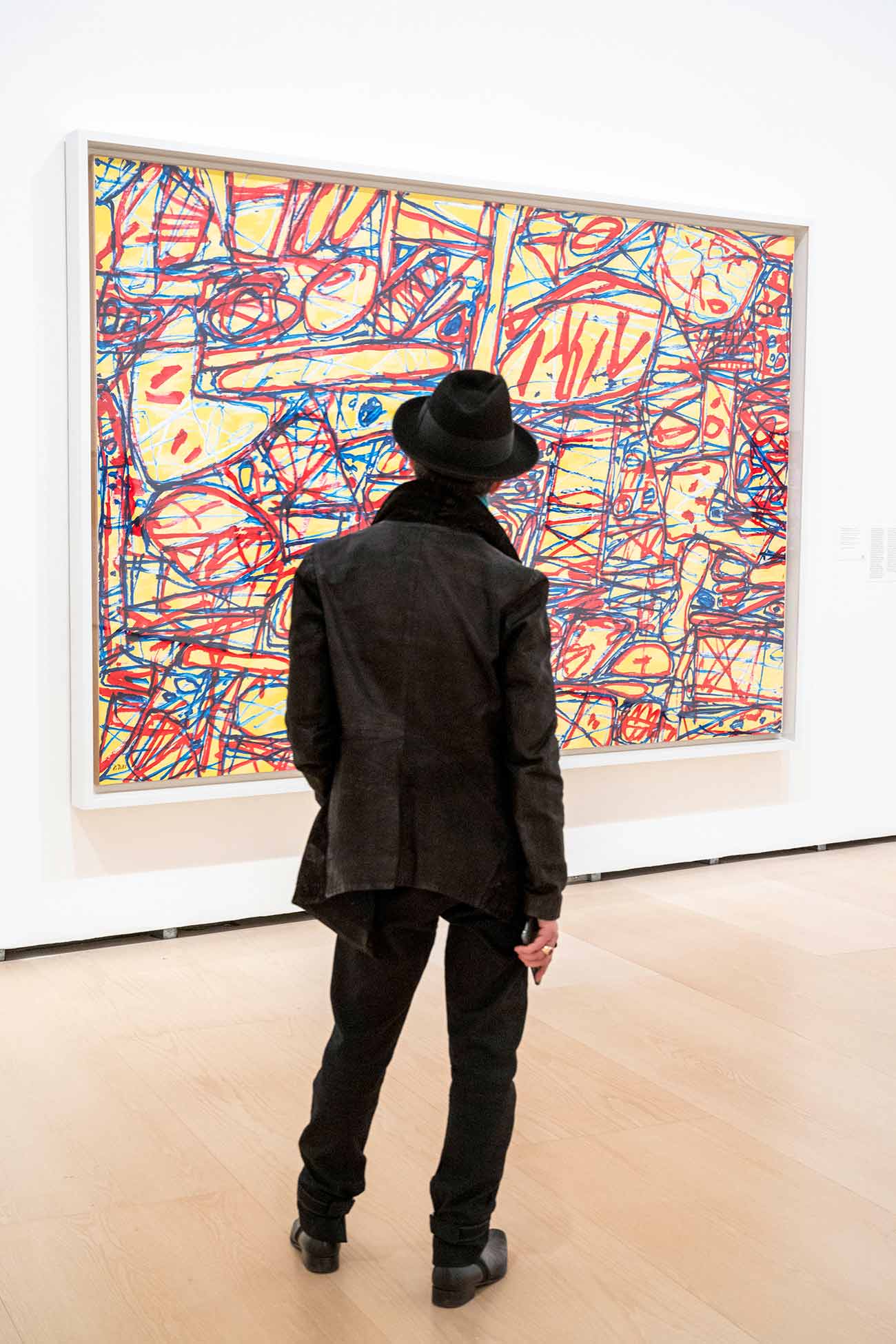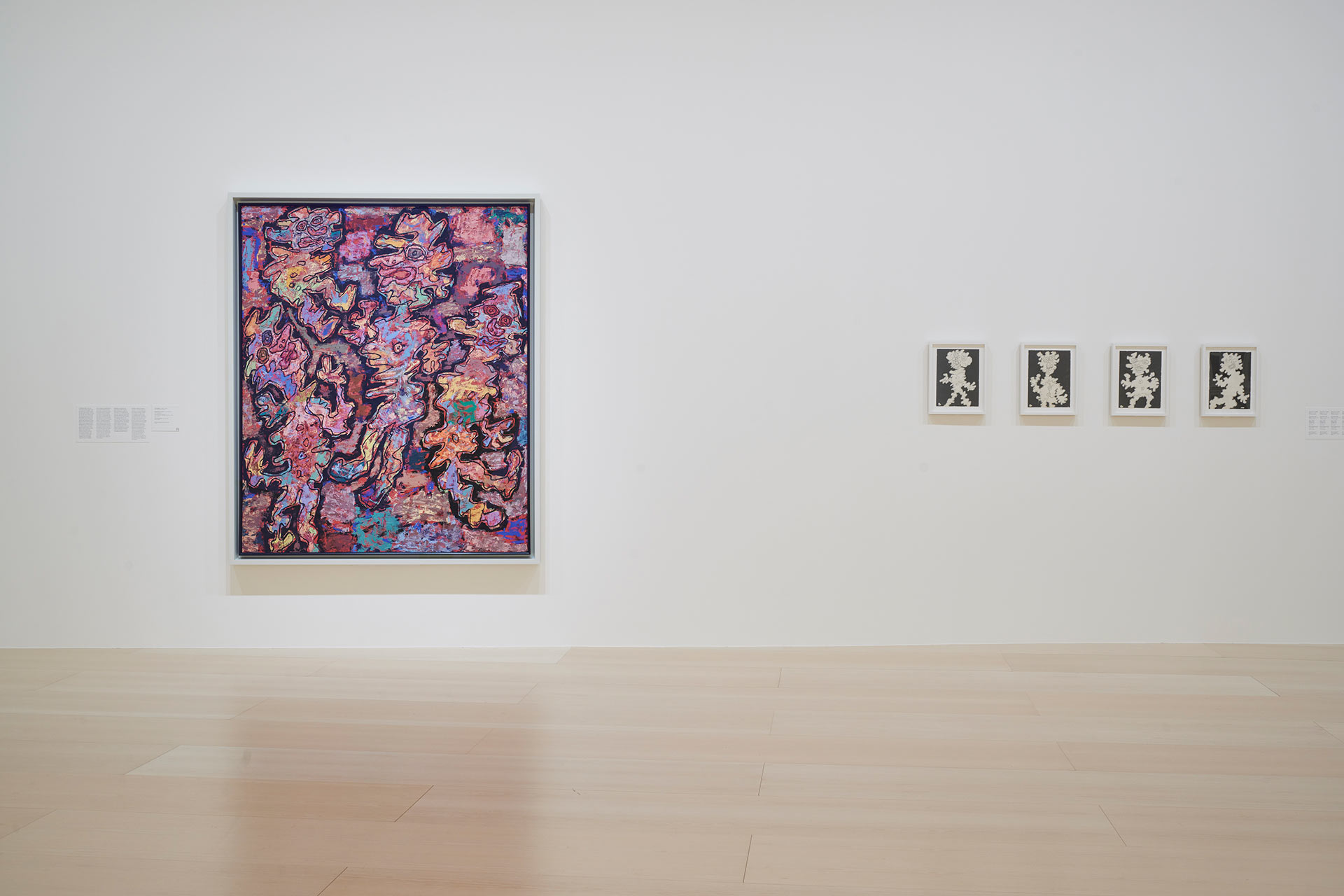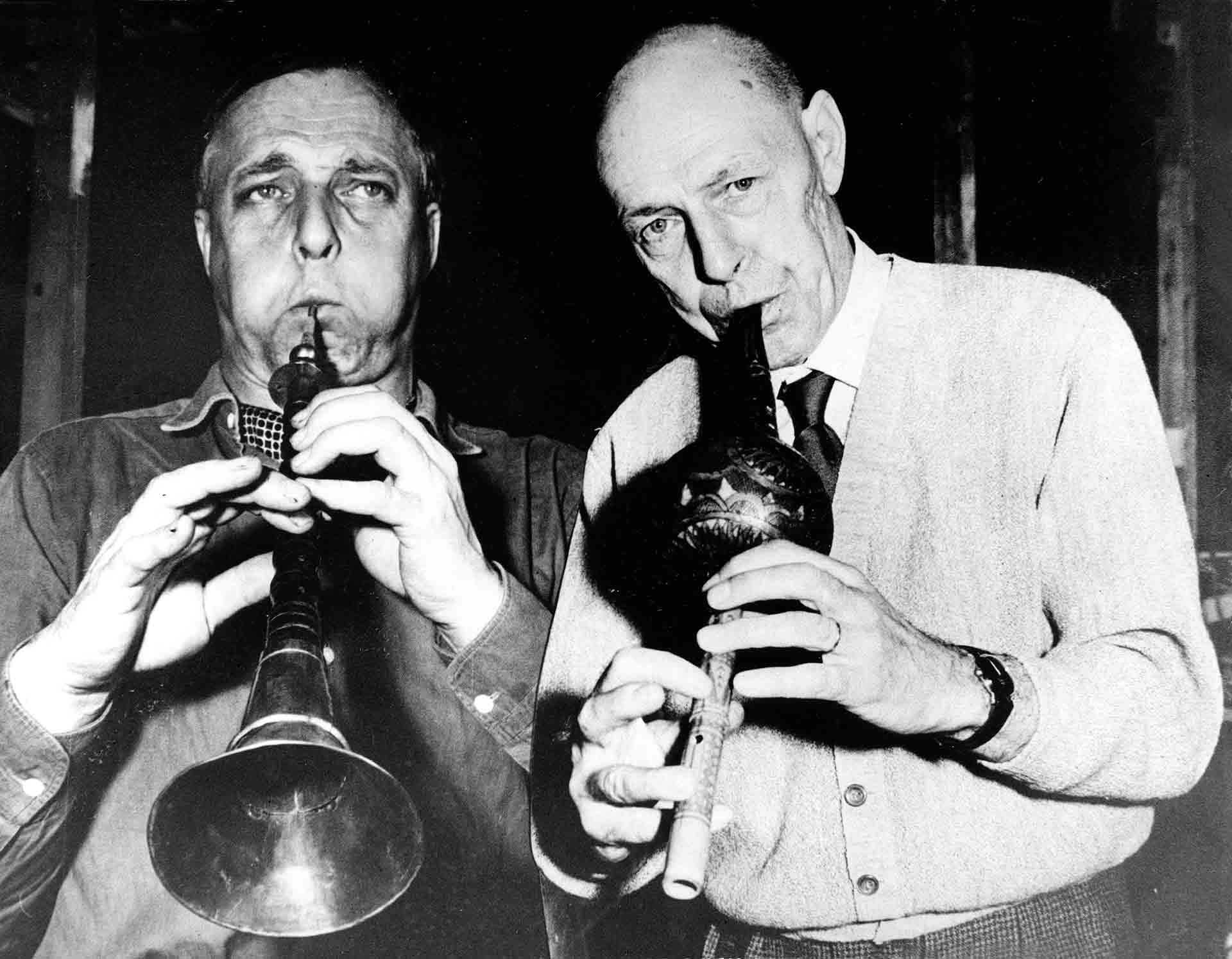Jean Dubuffet: Ardent Celebration
02.25.2022 - 08.21.2022
At the end of World War II, Jean Dubuffet (1901–1985) began exhibiting paintings that defied entrenched artistic values. He rejected principles of decorum and classical beauty, along with pretentions of expertise. Instead, he looked to the commonplace and the unheralded, employing crude materials, mundane subjects, and a style that spurned any outward sign of academic training.
In this approach, Dubuffet was challenging norms that he believed obstructed authentic expression and devalued everyday experience. However, his goal was not only to reveal how threadbare cultural conventions were; he also wanted to illustrate the vitality of life freed from them. As he once claimed, “I would like people to see my work as a rehabilitation of scorned values and . . . make no mistake about it, a work of ardent celebration.”
Jean Dubuffet
The Misunderstanding (La Mésentente), March 12, 1978
Acrylic on paper, mounted to canvas
139.4 x 241.9 cm
Solomon R. Guggenheim Museum, New York, By exchange 86.3405
© Jean Dubuffet, VEGAP, Bilbao, 2022
Virtual Tour
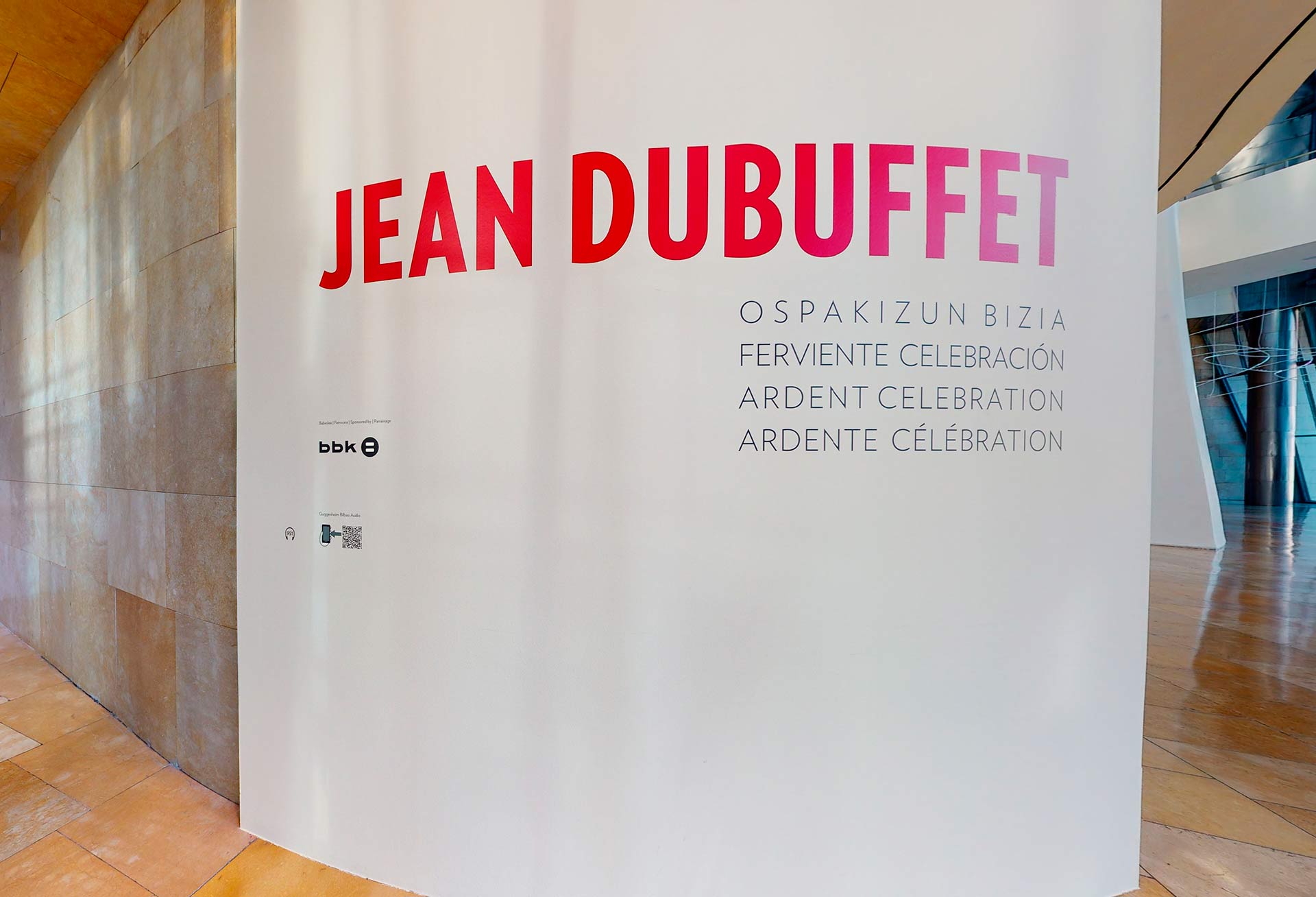
Resources
The Exhibition
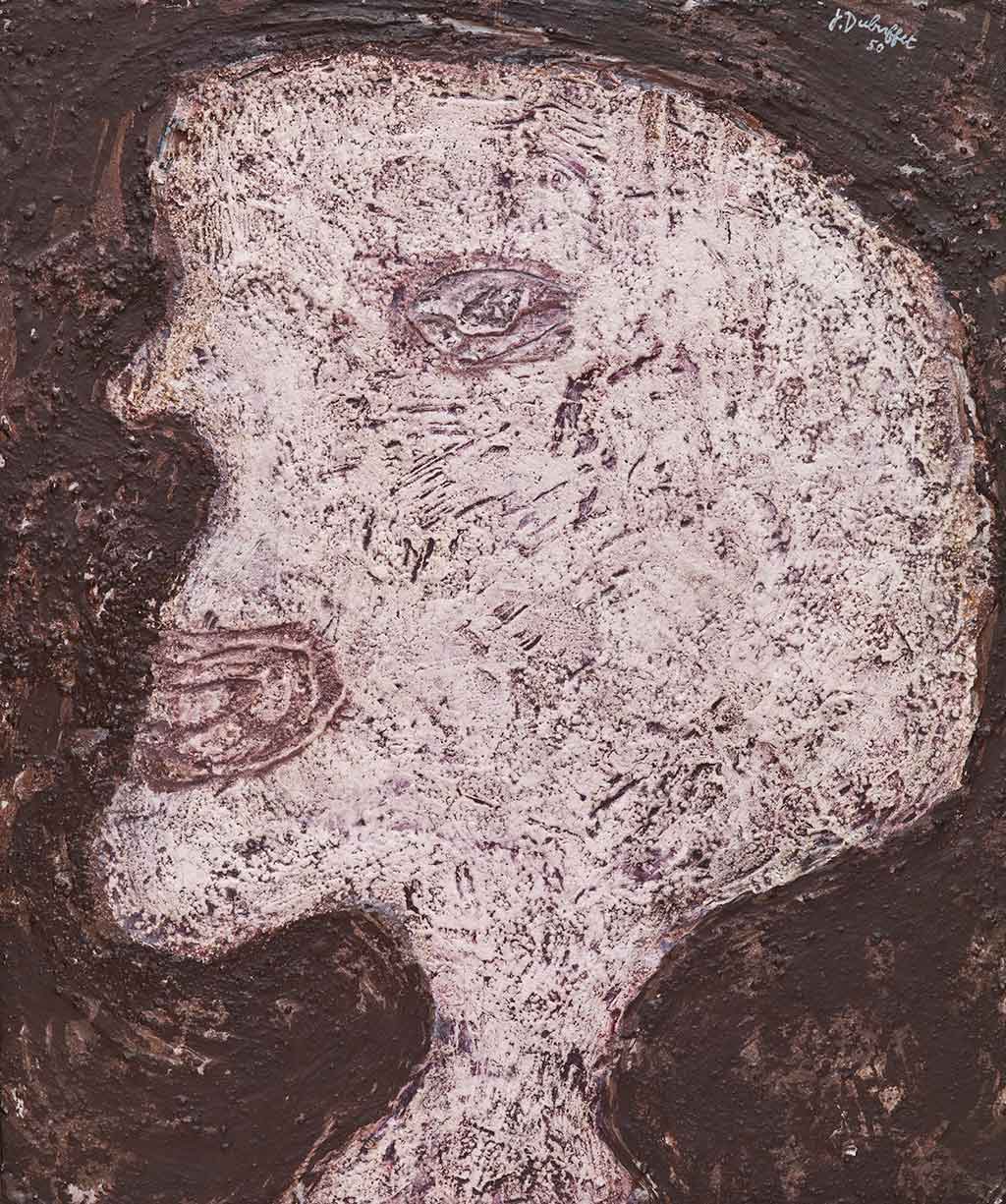
Jean Dubuffet
Portrait of the Soldier Lucien Geominne (Portrait du soldat Lucien Geominne), December 1950
Oil, sand, and pebbles on Masonite
64.8 x 61.6 cm
Solomon R. Guggenheim Foundation, Hannelore B. and Rudolph B. Schulhof Collection, bequest of Hannelore B. Schulhof 2012.49
© Jean Dubuffet, VEGAP, Bilbao, 2022
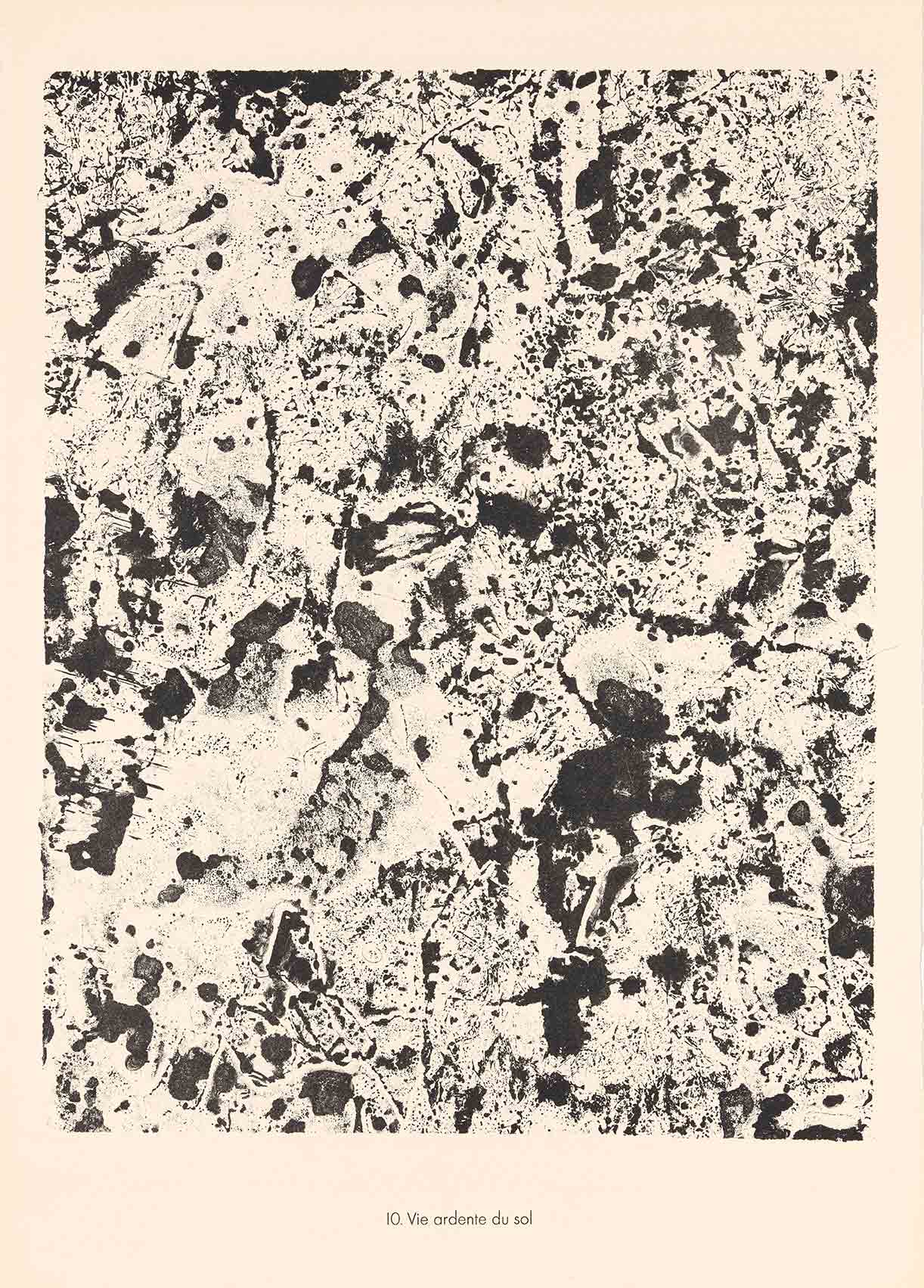
Jean Dubuffet
The Burning Life of the Earth (Vie ardente du sol), July 1959
from Theater of the Earth (Théâtre du sol)
Lithograph with letterpress, 63.5 x 45.2 cm
Solomon R. Guggenheim Museum, New York, Gift, Mr. and Mrs. Morton Lloyd Janklow in honor of the artist 82.2973.8.10
© Jean Dubuffet, VEGAP, Bilbao, 2022

